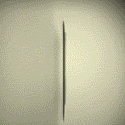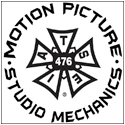
The “Pancake” Camera
that changed film and
natural history in
Mr. Akeley’s Movie
Camera exhibition
What do Hollywood directors, the US Army during World War I, and a taxidermist all have in common? A portable, easily maneuverable “pancake” camera invented by Carl Akeley, the Field Museum’s first chief taxidermist. To explore Carl Akeley’s contributions to natural history and beyond, the Field Museum is opening a new exhibition, Mr. Akeley’s Movie Camera, on July 20.
Carl Akeley was a larger-than-life explorer, artist, and conservationist—he fought off a leopard with his bare hands and survived getting trampled by an elephant.

“This exhibition provides a fascinating peek into the life and pursuits of this workaholic genius and the role he played in teaching the world about nature,” says Mark Alvey, the Field Museum’s content advisor for the exhibition. “The movie camera Akeley invented to film animals in the wild turned out to be one of his most important contributions to science, and to how we all see and understand the natural world.”
The camera Akeley invented in 1915 was just one of the ways that he revolutionized artists’ ability to capture the natural world. He made a name for himself as the “father of modern taxidermy,” creating lifelike representations of animals by mounting skins onto sculpted forms (like you see in hunting trophies).
 After trying to film a lion hunt with a traditional camera, Akeley decided to develop his own that could be transported easily outdoors, smoothly focus and pan, shoot in low light, and be quickly reloaded with film stock to capture as much as possible in the thick of action. With its round appearance, it was soon dubbed the Akeley “pancake” camera.
After trying to film a lion hunt with a traditional camera, Akeley decided to develop his own that could be transported easily outdoors, smoothly focus and pan, shoot in low light, and be quickly reloaded with film stock to capture as much as possible in the thick of action. With its round appearance, it was soon dubbed the Akeley “pancake” camera.
The newly-developed camera was portable, rotatable, and easy to maneuver—the GoPro of the early 1900s. In an unexpected turn of events, the camera was used by the military for aerial reconnaissance during World War I. After the military gave up exclusive rights, newsreel companies and the film industry in Hollywood picked up the technology and used it to film action sequences and aerial footage in early blockbusters.
 The exhibition features a pristine example of an original Akeley motion picture camera on its tripod, along with original 1928 video footage taken by Akeley cameras showing lion cubs, elephant families, and herds of zebras. To showcase his artistry, Akeley’s bronze sculptures of elephants, a lion, and a buffalo will be on display, as well as a mountain-dwelling sheep taxidermied by Akeley himself.
The exhibition features a pristine example of an original Akeley motion picture camera on its tripod, along with original 1928 video footage taken by Akeley cameras showing lion cubs, elephant families, and herds of zebras. To showcase his artistry, Akeley’s bronze sculptures of elephants, a lion, and a buffalo will be on display, as well as a mountain-dwelling sheep taxidermied by Akeley himself.
“Although they’re old-school technology, the public’s love for dioramas has never died; over the past few years, interest in taxidermy and dioramas has really grown among artists and scholars, and there has been a renaissance of interest in Akeley in particular,” says Dr. Mark Alvey. “I think people will really enjoy learning about this artist and naturalist who made such a big impact on how we understand and appreciate nature today.”
Mr. Akeley’s Movie Camera is free to the public with museum admission and will run through March 2019.
For more information on the exhibition, click here.

















